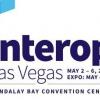With few options, companies pay hush money to data thieves
There's a disturbing new angle to cyberattacks that has become more common over the last year, and it is proving costly for organizations: extortion.Over the last year, companies have at times paid more than US$1 million in hush money to cyberattackers who have stolen their sensitive data and threatened to release it online, said Charles Carmakal, a vice president with Mandiant, the computer forensics unit of FireEye, in an interview on Wednesday."This is where a human adversary has deliberately targeted an organization, has stolen data, has reviewed that data and understands the value of it," Carmakal said. "We have seen seven-figure payouts by organizations that are afraid for that data to be published."To read this article in full or to leave a comment, please click here



 Enterprise and IoT loom in Nuage's future.
Enterprise and IoT loom in Nuage's future. The SDN wunderkind grows up to join Andreessen Horowitz.
The SDN wunderkind grows up to join Andreessen Horowitz.